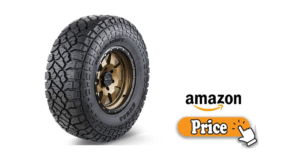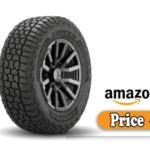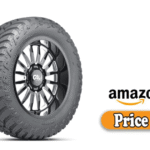In the world of automotive parts, tires often don’t get the attention they deserve until it’s time to replace them. For smart shoppers, it’s not just about grip and tread life; it’s about trusting the brand behind those tires.
One name that continues to rise in global recognition is Kenda Tires. But many drivers ask the question: Who owns Kenda Tires? This article gives you the complete breakdown, not just about ownership, but about Kenda’s quality, design philosophy, performance on the road, and whether their tires are worth your money.
We’ll also explore how the brand compares with alternatives and help you make a confident buying decision. Let’s roll.
What I Like About Kenda Tires
Kenda might not have the same name recognition as Michelin or Goodyear, but it brings a lot to the table, especially for value-conscious drivers.
1. Affordable Price Point
One of Kenda’s biggest strengths is its competitive pricing. You can often get a set of four Kenda tires for the cost of two from a premium brand without sacrificing essential performance.
2. Wide Product Range
Kenda produces tires for almost every category:
- Passenger cars
- SUVs
- Light trucks
- Trailers
- Bicycles
- Motorcycles
- ATVs
They’re especially known for their off-road and specialty tire lines.
3. Surprisingly Good Performance
Kenda tires hold up well in everyday driving conditions. Models like the Kenda KR20A and Kenetica KR17 have solid dry and wet traction ratings at a fraction of the cost of name-brand alternatives.
4. Consistent Improvements
Kenda has significantly improved its quality in recent years by investing in better tread designs and production technology.
5. Growing OEM Partnerships
Kenda is increasingly being used as original equipment on trailers, compact cars, and utility vehicles, showing that manufacturers are starting to trust their quality, too.
What Could Be Better
While Kenda offers great bang for the buck, it’s not a perfect brand. Here are a few areas where they lag:
1. Brand Recognition & Trust
Kenda is not a household name, especially in North America. Some buyers hesitate simply because they haven’t heard much about the brand.
2. Limited Premium Options
You won’t find ultra-high-performance or luxury touring tires from Kenda. They focus mostly on everyday, practical use cases.
3. Winter Performance Is Limited
While Kenda offers all-season options, its dedicated winter tire lineup is small, and some models may underperform in extreme snow/ice conditions. 👉🏿👉🏻 Check the Latest Price and Offer at Amazon 👈🏻👈🏿
👉🏿👉🏻 Check the Latest Price and Offer at Amazon 👈🏻👈🏿
My Personal Experience with Kenda Tires
I first came across Kenda when I needed an affordable set of tires for a secondhand commuter car. After some research and reading reviews, I chose the Kenda Kenetica KR17, and I was pleasantly surprised.
Here’s what I experienced:
- Quiet, stable ride for the first 30,000 miles.
- No loss in grip during rainy commutes.
- Even after a full year, tread wear was minimal and even.
- Tires were well-balanced, requiring very little correction after installation.
Later, I tried the Kenda Klever A/T2 on a light SUV. While not a hardcore off-roader, these tires handled gravel, mud, and snow better than expected. I appreciated the aggressive tread and confident handling in bad weather.
Overall, for daily drivers and budget-conscious buyers, Kenda performed better than its price tag suggests.
Design Philosophy of Kenda Tires
Kenda’s approach to design is centered around practicality, safety, and affordability. They don’t try to compete with racing tires or luxury touring tires; instead, they build solid, all-purpose tires that get the job done reliably.
Key Design Priorities:
- Simplicity & Durability: Kenda tires are built with low-complexity designs, meaning fewer things can go wrong over time.
- Advanced Tread Compounds: Newer Kenda models feature silica-enhanced rubber for better wet traction and lower rolling resistance.
- Noise Reduction Grooves: In models like the KR17, the tread is designed to reduce vibration and road noise.
- Reinforced Sidewalls: Especially in off-road and trailer models, Kenda tires feature strong sidewalls for extra load support and impact protection.
This design approach helps them stay affordable without compromising basic safety and comfort.
Performance: How Do Kenda Tires Handle Real Roads?
Let’s look at how Kenda tires perform under common driving conditions:
1. Dry Pavement
Kenda tires offer confident traction and stability in dry conditions. Whether cruising on the highway or navigating city traffic, most models feel stable and planted.
2. Wet Roads
This is where Kenda has made big strides. Tread designs like angled siping and water evacuation grooves help reduce hydroplaning, although they may not match premium tire braking distances in heavy rain.
3. Snow & Ice
Unless you buy a dedicated winter tire (like the Klever Winter KR601), don’t expect exceptional snow performance. Their all-season tires can manage light snow, but deep snow and ice will require a winter-specific tire.
4. Ride Comfort & Noise
Most users report a smooth, quiet ride during the early life of the tire. Some noise can develop as tread wears down, but that’s true for most budget tires.
5. Tread Life
Many Kenda tires come with 40,000 to 65,000-mile warranties. With proper rotation and inflation, it’s very realistic to hit those numbers.
Build Quality: Materials, Standards & Manufacturing
Who Owns Kenda Tires?
Kenda Tires is owned by the Kenda Rubber Industrial Company, a Taiwan-based company founded in 1962. It remains an independent, privately-owned corporation with a growing presence in the global tire market.
Kenda is not owned by a larger conglomerate like Goodyear, Michelin, or Bridgestone. Instead, it operates under its umbrella with full control over its manufacturing, R&D, and branding.
Where Are Kenda Tires Made?
Kenda operates manufacturing facilities in:
- Taiwan (Headquarters)
- China
- Vietnam
- Indonesia
United States (Joint Venture in Ohio with Cooper Tires)
Kenda tires sold in North America are typically manufactured in Asia or sourced via their joint venture with Cooper in Ohio, USA. Their manufacturing standards meet DOT and ECE regulations, ensuring they meet U.S. safety standards.
Alternative Tire Brands to Consider
If you’re shopping in the same price range as Kenda, here are a few alternatives worth looking into:
1. Hankook
A Korean brand known for delivering mid-range tires with premium features. More expensive than Kenda but still accessible.
2. Kumho
Another budget-friendly brand with good reviews, especially in touring and all-season segments.
3. Cooper Tires
Made in the USA, often priced slightly higher than Kenda, but offers longer treadwear warranties and better winter performance.
4. General Tire
Offers good all-terrain and all-season models. Known for value and durability, much like Kenda.
Final Thought:
Who owns Kenda Tires?
Kenda is an independent, privately owned tire company headquartered in Taiwan, not part of any large multinational conglomerate.
Despite being lesser-known in the U.S. market, Kenda is a serious global player with a strong reputation in cycling, powersports, and increasingly in the automotive tire world. They produce affordable, reliable tires for everyday driving, light off-roading, and even trailers.
If you’re looking for solid performance at a budget price, and you’re okay with buying from a non-premium brand, Kenda is a smart buy. Just make sure to match the tire to your specific driving needs and don’t expect ultra-high-end performance.
FAQs: Who Owns Kenda Tires | My Honest Experience
1. Who owns Kenda Tires?
Kenda Tires is owned by Kenda Rubber Industrial Company, a privately held corporation headquartered in Taiwan.
2. Are Kenda tires made in the USA?
Some Kenda tires are manufactured in the U.S. through a joint venture with Cooper Tires in Ohio, but the majority are made in Taiwan, Vietnam, Indonesia, and China.
3. Are Kenda tires of good quality?
Yes, especially considering their price. Kenda tires are known for durability, solid all-season performance, and affordability.
4. How long do Kenda tires last?
Most Kenda tires have treadwear warranties ranging from 40,000 to 65,000 miles, and users typically report real-world results close to those numbers.
5. Does Kenda make tires for trucks and SUVs?
Absolutely. The Klever series is designed specifically for SUVs, light trucks, and off-road conditions.
6. How do Kenda tires compare to Michelin or Goodyear?
Kenda offers great value but doesn’t match the premium performance, longevity, or noise reduction of Michelin or Goodyear. It’s more of a practical, budget-conscious choice.
7. Is Kenda a reliable company?
Yes. Kenda has over 60 years in the tire business, sells globally, and continues to expand its automotive division, especially in North America.




